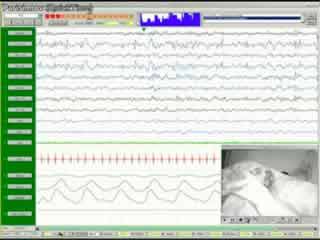Epileptic Disorders
MENUIctal video-polysomnography and EEG spectral analysis in a child with severe Panayiotopoulos syndrome Volume 7, numéro 4, December 2005
- Mots-clés : Panayiotopoulos syndrome, sleep videopolysomnography, ictal EEG, EEG spectral analysis, compressed spectral array, idiopathic occipital epilepsy
- Page(s) : 333-9
- Année de parution : 2005
Objective. To describe the ictal polysomnographic features of a patient with Panayiotopoulos syndrome, a peculiar epileptic syndrome characterized by infrequent, often single, prolonged, nocturnal, focal seizures comprising an unusual constellation of autonomic symptoms (malaise, nausea, pallor, tachycardia, vomiting) and unilateral deviation of the eyes at the onset of seizures. These clinical, ictal manifestations are rarely followed by post-ictal headache. In the literature, there is little information on the ictal EEG characteristics of Panayiotopoulos syndrome and, in particular, on certain autonomic manifestations, such as tachycardia, as the sole ictal phenomena at the onset of seizures. Methods and results. One, all-night videopolysomnography, during which one seizure was recorded. Video-EEG data were evaluated visually and by means of quantitative spectral analysis. The spectral analysis of the recorded seizure showed a complex ictal pattern of cortical involvement with focal onset in the right occipital area followed by the recruitment of widespread extra-occipital cortical regions. Conclusions. This is the first such analysis of this peculiar epileptic condition. Most of the symptoms were consistent with a diagnosis of severe Panayiotopoulos syndrome, although the patient also presented “atypical findings”: a relatively high frequency of seizures, post-ictal headache, no spontaneous remission of seizures with age, and late onset of visual hallucinations; this last finding is more frequent in "Gastaut-type childhood occipital epilepsy", in which onset typically occurs later than in Panayiotopoulos syndrome. [Published with video sequences]


